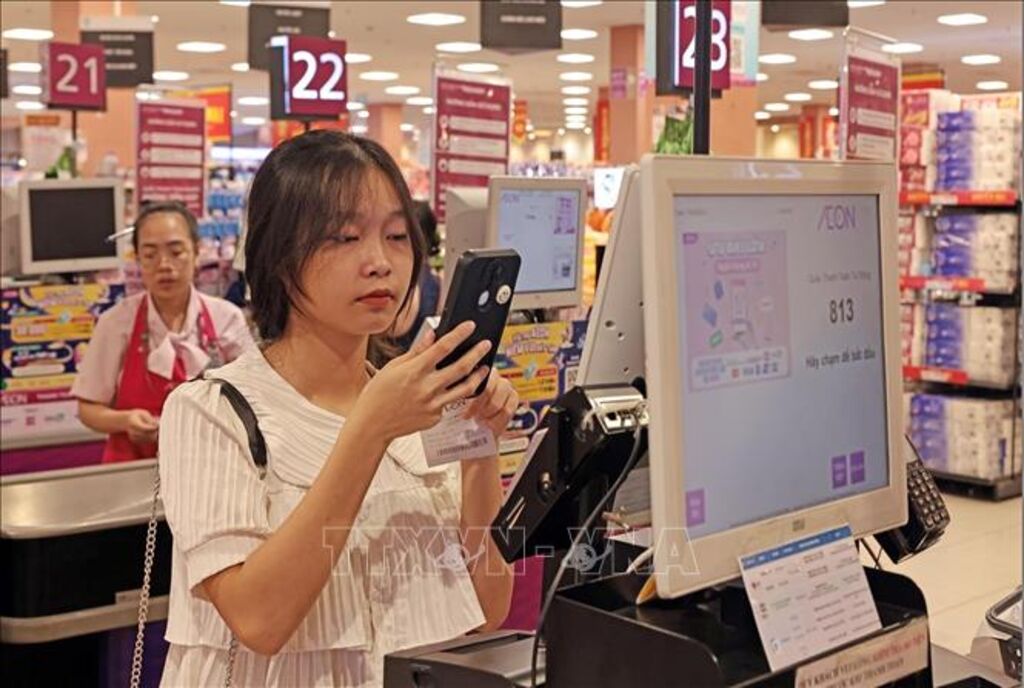 |
| A customer makes non-cash payment for goods purchased at an AEON supermarket__Photo:VNA |
On July 1, the Government issued Decree 181/2025/ND-CP detailing the implementation of several provisions of the 2024 Law on Value-Added Tax.
Under the decree, which came into force on the date of its promulgation, in order to be eligible for input VAT credit, a business must provide proof of non-cash payment for purchases of goods or services, including also imported goods, with a value of VND 5 million or more, inclusive of VAT. It is noted that proof of non-cash payment must comply with Decree 52 of 2024, except documents on the buyer’s deposit of cash into the seller’s account which are not regarded as valid proof of non-cash payment.
Decree 181 also specifies conditions for input VAT credit in several special cases under the 2024 Law on Value-Added Tax.
First, for transactions in which goods or services are acquired through offsetting against the value of goods or services sold (i.e., barter or netting), such method must be specifically stipulated in the contract, and a reconciliation statement and written confirmation of the offset between the involved parties (including a third party, if any) will be required.
Second, for transactions where payment is made through debt offsetting, such as loans or borrowings, the contract must clearly specify the payment method. In this case, there must be a loan or borrowing agreement established in advance, along with documents evidencing the fund transfer from the lender’s account to the borrower’s.
Third, in cases where the payment for purchased goods or services is made via an authorized third party using non-cash methods, the payment to the third party designated by the seller must be specified in writing in the contract. Concurrently, the third party must be an organization or individual lawfully operating in accordance with law.
Fourth, if payment is made in stocks or bonds, a written trading agreement must have been entered into beforehand.
In all of the above-mentioned cases, after applying offsetting arrangements, any remaining balance with a value of VND 5 million or more must also be paid via non-cash means in order to qualify for VAT credit.
Fifth, in cases where the buyer makes a payment into a third party’s account at the State Treasury as part of an enforcement measure to collect money held by another organization or individual, input VAT may be credited correspondingly to the amount transferred to the third party’s State Treasury account.
Sixth, for deferred or installment purchases valued at VND 5 million or more, the buyer must possess a contract, invoices, and proof of non-cash payment to claim VAT credit. If the payment is not yet due under the contract, temporary credit will be allowed. However, if by the due date, the buyer fails to provide proof of non-cash payment, they must declare a reduction in the to-be-credited tax amount.
Proof of non-cash payment is not required for each importation of goods valued under VND 5 million, or for goods received as gifts, donations, or free-of-charge samples from abroad. However, if a business makes multiple purchases from the same seller on the same day, and the total value reaches VND 5 million or more, proof of non-cash payment will be required.
Seventh, if a business authorizes an employee to make non-cash payments for goods used in production activities in accordance with internal financial regulations, and later reimburses that employee, such payments will be eligible for input VAT credit.- (VLLF)









